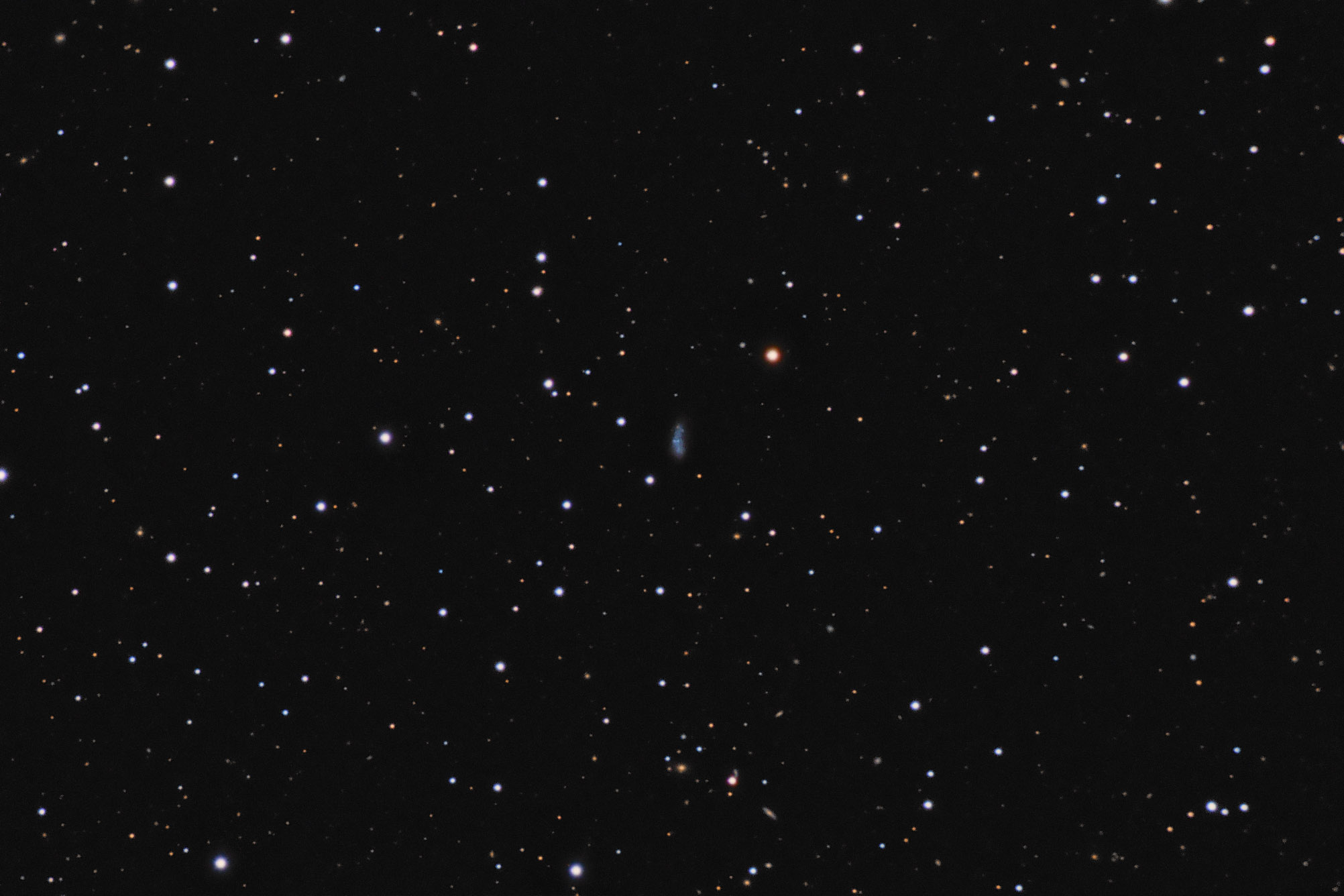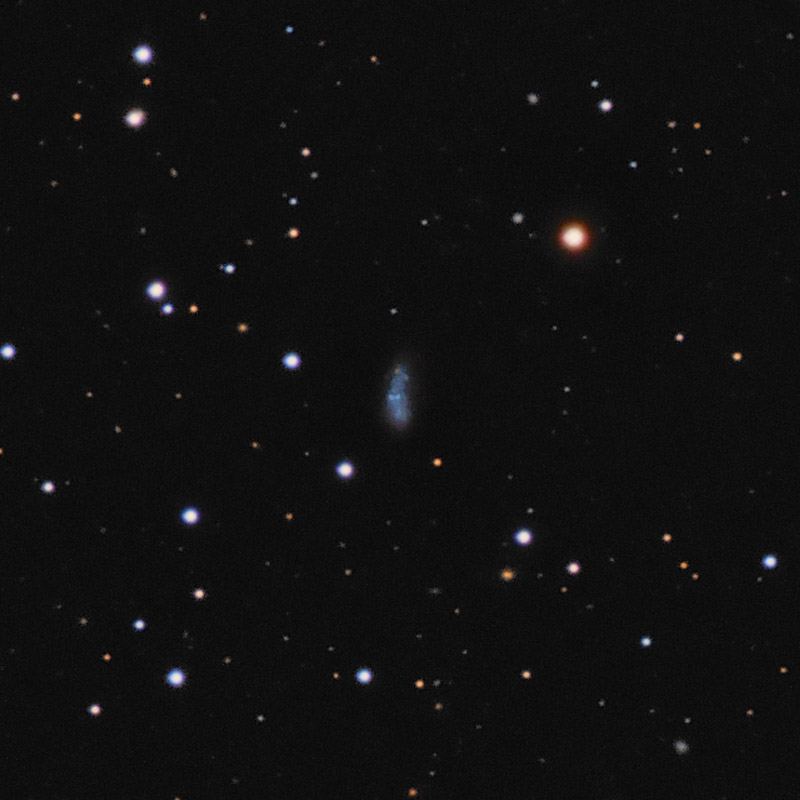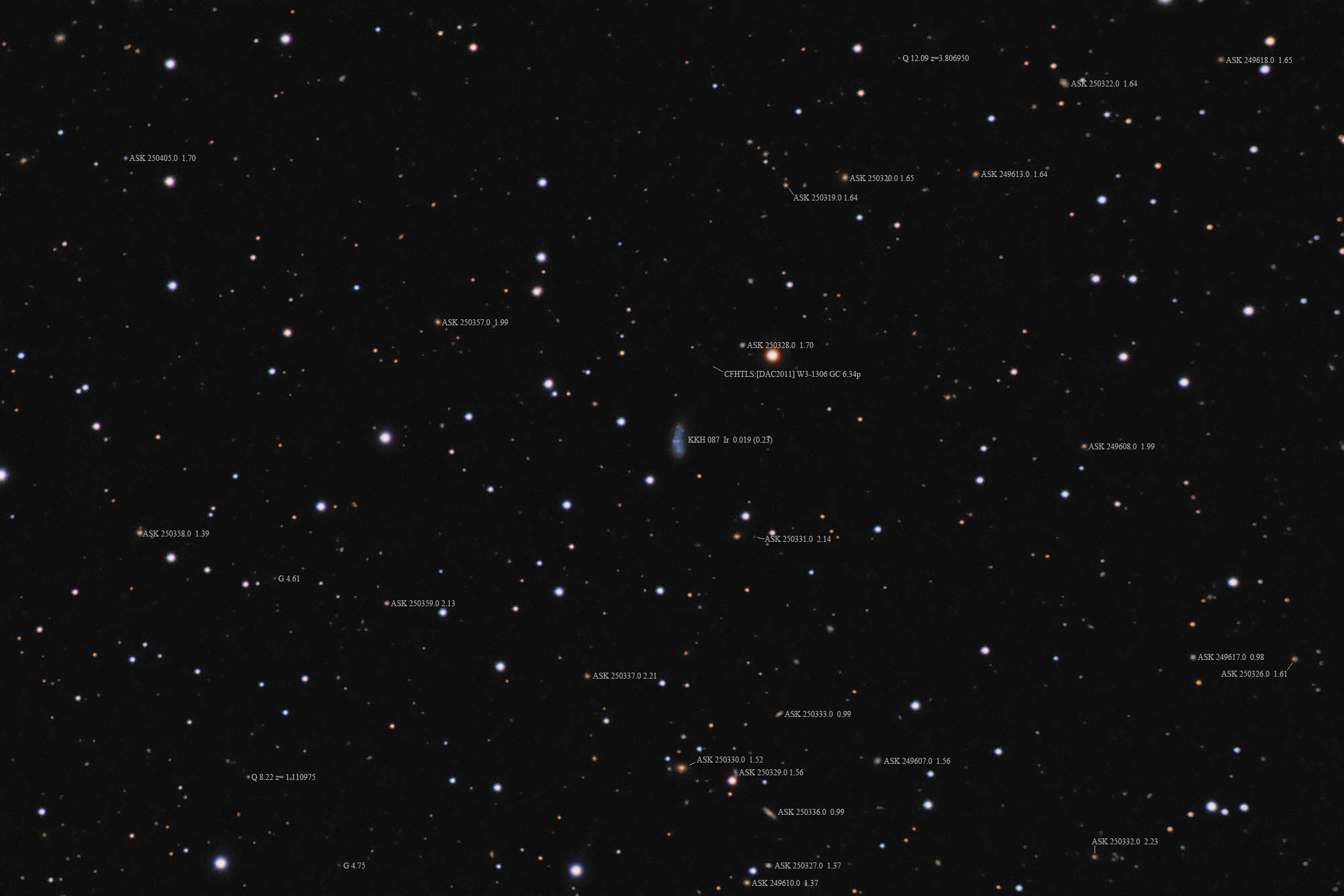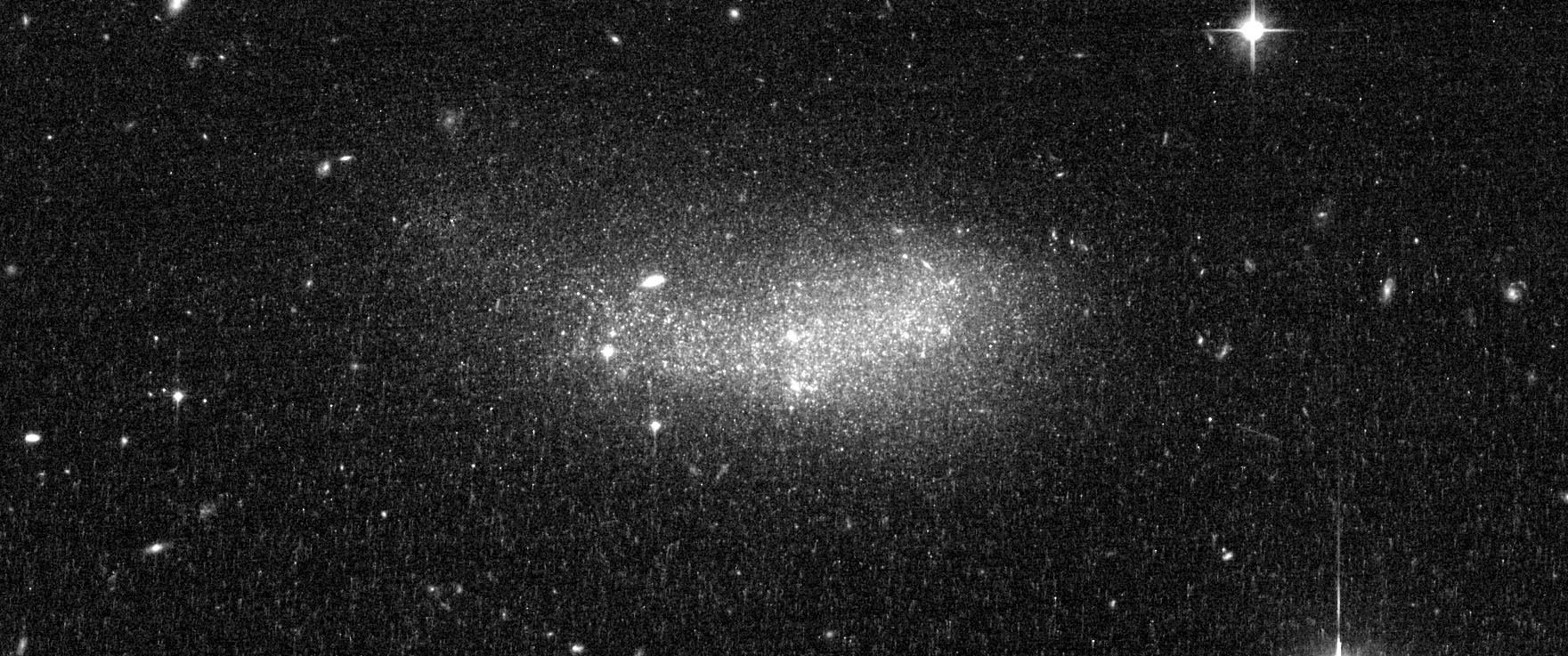| Description | Images |
Object name: KKH087Designation(s): KKH087, The tiny galaxy kkh 87 is a probable dwarf member of the M101 galaxy group located about 19 to 23 million light-years distant. Some sources don't list it as a member but many do. I'm going to side with those that do include it as a member. I'll split the difference and say 21 million which is a good match for M81. Their angular separation of 3.2 degrees would then be a separation of 1.2 million light-years. It's size is about 5400 light years making it a rather small dwarf galaxy. A note at NED however says it might be two saying "North and south portions are possibly separated forming a pair." It does show an odd kink in the middle though it has a blue star cloud right at its core assuming it is one galaxy or at the north end of one of two galaxies if considered two galaxies or is that at the south end if it is a member of the northern galaxy. I prefer only one galaxy. The apparent blue cloud at the top right is actually a background galaxy. The orange object at the very top on the left is a star in our galaxy seen against the dwarf. I've included a crude HST image of this galaxy that easily resolves its stars. I see nothing in it to indicate this is two galaxies. Related Designation(s):11HUGS 369, GALEXASC J141509.31+570517.1 , kkh 087, KKH087, KUG 1413+573, NSA 110522, NSA 144746, PGC 050911, |



